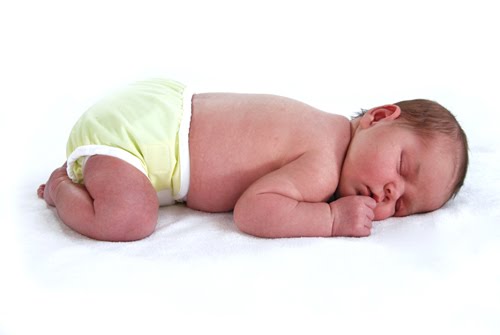
Feeding your baby can be one of the most rewarding things that you do. We have covered a lot so far in the Breastfeeding 101 series, including the mother’s needs, the value of breast milk, how the baby benefits , and benefits to the mother. Today we start to get into the nuts and bolts of feeding your baby, starting with demand feeding, and how often your baby should nurse.
A new baby may not be strong enough to take in an adequate amount of food in a single feeding, and as a result he or she will need to nurse more often. Compared to a formula fed feeding, a breastfed baby will eat at more frequent intervals. Why, you may ask? Breast milk is more easily and quickly digested than formula is. It is, after all, made by the mother specifically for this purpose! While a formula fed baby may take a bottle every few hours in the first days of life, a breastfed baby may nurse every 1 1/2- 2 1/2 hours, and at least every 3 hours. Even if a baby does not cry, you should still offer the breast at frequent intervals.
It’s very important not to limit the time that you nurse. Sometimes women will experience sore nipples, and thinking that the pain is brought on by nursing for too long, they cut short the feedings. The real reason for sore nipples is actually an improper latch, not the length of time that you nurse. Proper latch will be explained in detail in a later post. It is important to drain the breast at each feeding to avoid milk becoming stagnant in the ducts and to allow the baby to get the nutritious hind milk that comes later on during the feeding. Demand feeding facilitates this.
Allowing your baby to nurse freely may result in:
- A more content baby
- Plentiful milk supply. The more you nurse, the more milk you will make.
- Increase of blood to the baby’s face and head, which may contribute to proper development of the brain.
Nursing your baby frequently will also reduce the chances of you developing mastitis, an infection of the milk ducts. Mastitis is something that you want to avoid at all costs. Symptoms are flu like (achiness and chills), with fever over 100.4 and hot red lumps or sore areas in the breast. These symptoms will put you in bed and make it extremely painful to nurse.
If you do come down with mastitis you can massage the milk ducts, especially while the baby is at the breast, use warm compresses in between nursing for pain relief, increase your amount of rest as much as possible, take 1000 mg of vitamin C and an oderless garlic supplement daily. Continue to nurse while you have mastitis. Your baby cannot get sick from your milk. If symptoms continue to worsen after 24 hours,even with the natural treatments, call your doctor. Your doctor will prescribe antibiotics for the infection. While on antibiotics make sure to take a probiotic as they can cause thrush in the baby’s mouth and on your nipples. There are also children’s probiotics that you can administer to the newborn. Make sure you have an infant probiotic though. Put a little bit on your nipple before putting the baby to the breast and your baby will safely ingest it.
A sufficient milk supply is so important, and demand feeding will help your body produce the amount of milk that your baby needs.
Signs of sufficient milk supply are:
- a happy baby
- 6-8 wet diapers a day
- frequent yellow, soft curd stools
- your milk may leak or drip, especially during the let-down reflex
- baby will swallow frequently while nursing
- sufficient weight gain, with the baby regaining it’s birth weight by 2 weeks, and doubling it’s birth weight by 6 months (generally)
Your baby will experience a growth spurt at about 3 weeks and 6 weeks. At these times, he or she will want to nurse even more frequently. Nurse as often as the baby desires and do not supplement with water or formula. Your body will adjust it’s milk production with the increased demands of your baby. During this time you may feel a bit full or engorged while your milk supply is increasing, but your breasts will adjust in a couple of days!